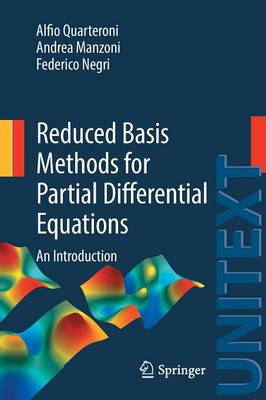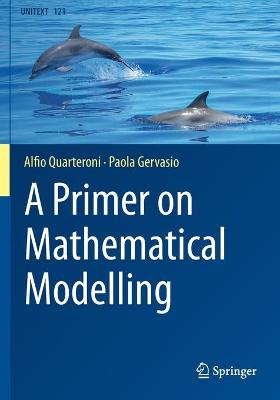La Matematica per il 3+2
2 primary works
Book 92
Reduced Basis Methods for Partial Differential Equations
by Alfio Quarteroni, Andrea Manzoni, and Federico Negri
This book provides a basic introduction to reduced basis (RB) methods for problems involving the repeated solution of partial differential equations (PDEs) arising from engineering and applied sciences, such as PDEs depending on several parameters and PDE-constrained optimization.
The book presents a general mathematical formulation of RB methods, analyzes their fundamental theoretical properties, discusses the related algorithmic and implementation aspects, and highlights their built-in algebraic and geometric structures.
More specifically, the authors discuss alternative strategies for constructing accurate RB spaces using greedy algorithms and proper orthogonal decomposition techniques, investigate their approximation properties and analyze offline-online decomposition strategies aimed at the reduction of computational complexity. Furthermore, they carry out both a priori and a posteriori error analysis.
The whole mathematical presentation is made more stimulating by the use of representative examples of applicative interest in the context of both linear and nonlinear PDEs. Moreover, the inclusion of many pseudocodes allows the reader to easily implement the algorithms illustrated throughout the text. The book will be ideal for upper undergraduate students and, more generally, people interested in scientific computing.
All these pseudocodes are in fact implemented in a MATLAB package that is freely available at https://github.com/redbkit
Book 121
In this book we describe the magic world of mathematical models: starting from real-life problems, we formulate them in terms of equations, transform equations into algorithms and algorithms into programs to be executed on computers.
A broad variety of examples and exercises illustrate that properly designed models can, e.g.: predict the way the number of dolphins in the Aeolian Sea will change as food availability and fishing activity vary; describe the blood flow in a capillary network; calculate the PageRank of websites.
This book also includes a chapter with an elementary introduction to Octave, an open-source programming language widely used in the scientific community. Octave functions and scripts for dealing with the problems presented in the text can be downloaded from https://paola-gervasio.unibs.it/quarteroni-gervasioThis book is addressed to any student interested in learning how to construct and apply mathematical models.

